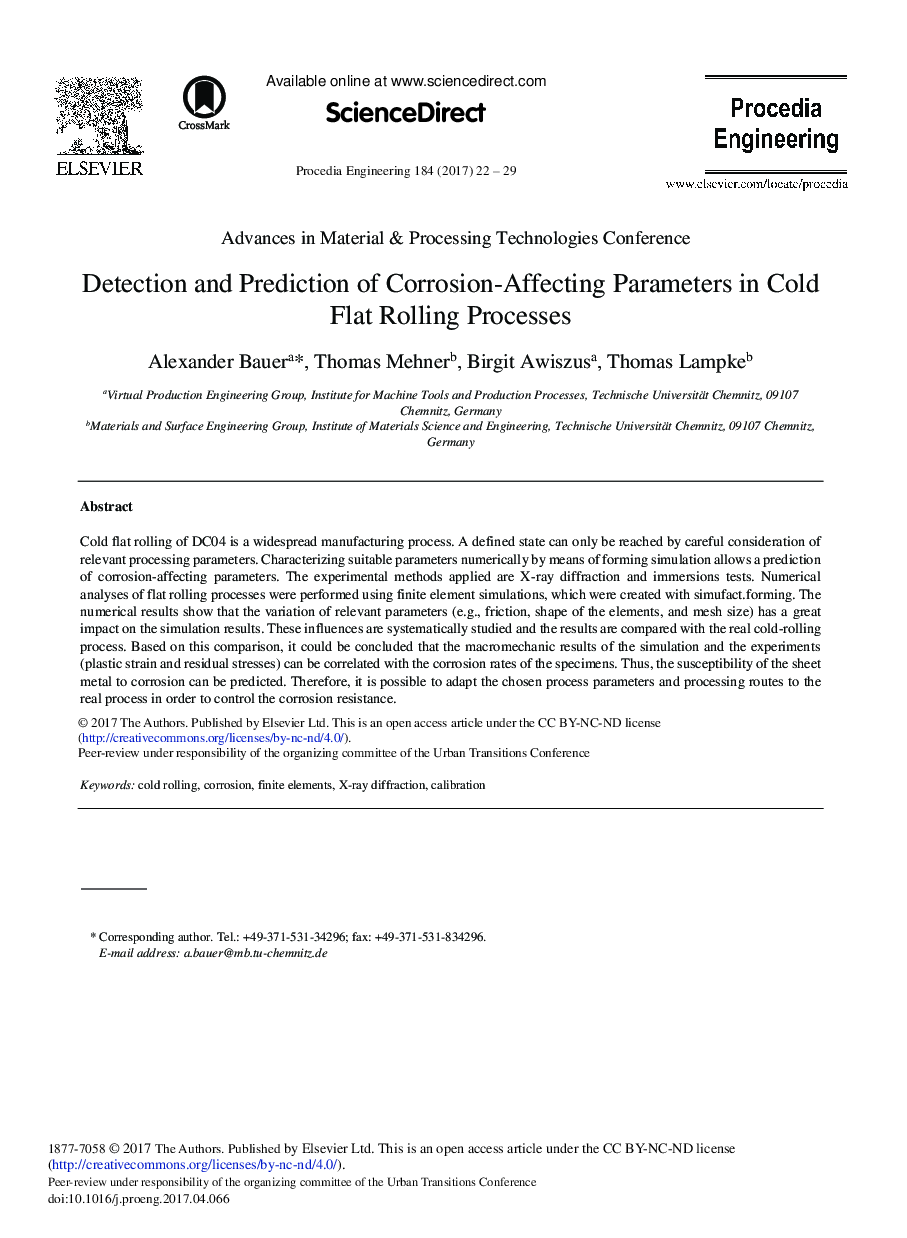| Article ID | Journal | Published Year | Pages | File Type |
|---|---|---|---|---|
| 5029102 | Procedia Engineering | 2017 | 8 Pages |
Abstract
Cold flat rolling of DC04 is a widespread manufacturing process. A defined state can only be reached by careful consideration of relevant processing parameters. Characterizing suitable parameters numerically by means of forming simulation allows a prediction of corrosion-affecting parameters. The experimental methods applied are X-ray diffraction and immersions tests. Numerical analyses of flat rolling processes were performed using finite element simulations, which were created with simufact.forming. The numerical results show that the variation of relevant parameters (e.g., friction, shape of the elements, and mesh size) has a great impact on the simulation results. These influences are systematically studied and the results are compared with the real cold-rolling process. Based on this comparison, it could be concluded that the macromechanic results of the simulation and the experiments (plastic strain and residual stresses) can be correlated with the corrosion rates of the specimens. Thus, the susceptibility of the sheet metal to corrosion can be predicted. Therefore, it is possible to adapt the chosen process parameters and processing routes to the real process in order to control the corrosion resistance.
Related Topics
Physical Sciences and Engineering
Engineering
Engineering (General)
Authors
Alexander Bauer, Thomas Mehner, Birgit Awiszus, Thomas Lampke,
